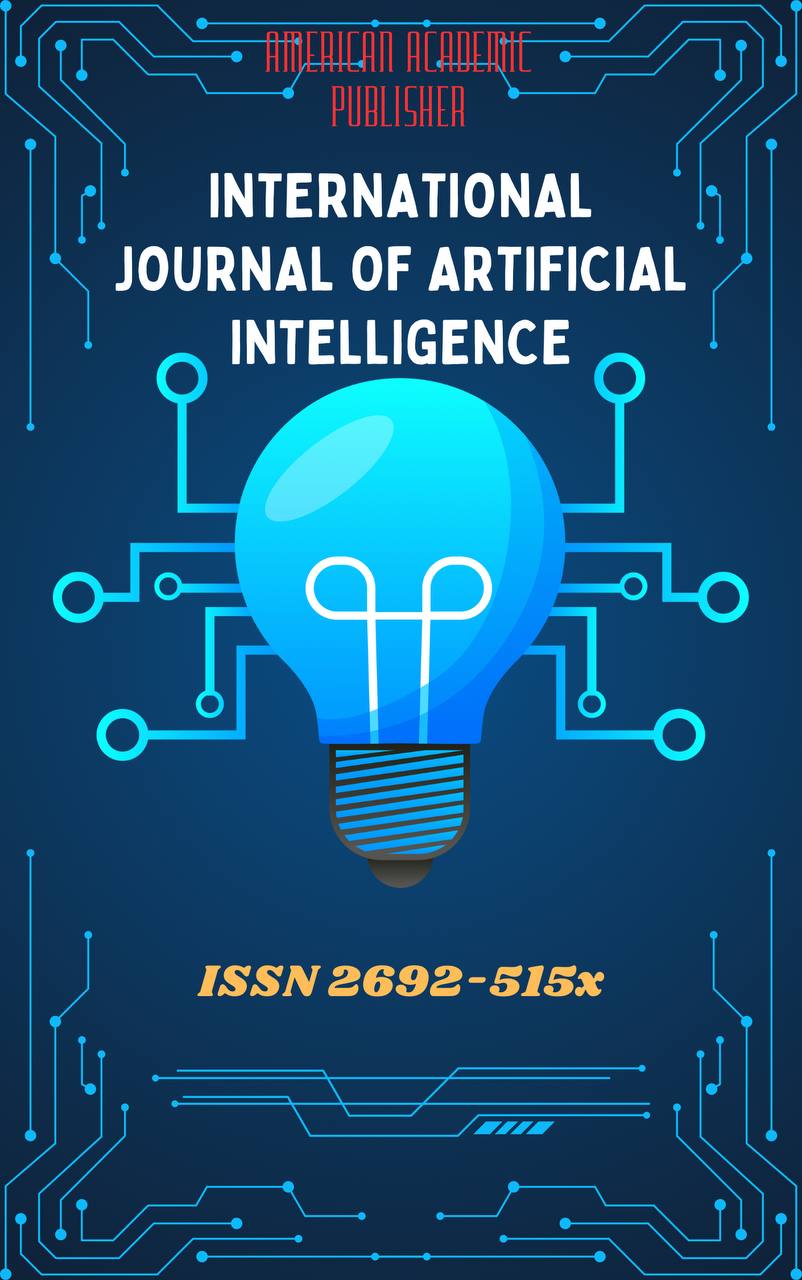 Articles
| Open Access |
Articles
| Open Access | A COMPREHENSIVE TAXONOMY AND PEDAGOGICAL FRAMEWORK FOR AI-DRIVEN TOOLS IN EFL LISTENING AND SPEAKING INSTRUCTION: INTEGRATING MULTIMODAL COMPOSING AND ADAPTIVE LEARNING
Nosirboyeva Shakhzoda Bektosh qizi , SamSIFLAbstract
This paper proposes a comprehensive framework integrating Artificial Intelligence (AI) into English as a Foreign Language (EFL) instruction, specifically targeting listening and speaking skills. We position AI as a "semiotic mediator" that bridges receptive listening and productive speaking through a "Listening-Composing Cycle." This model guides learners from deconstructing audio texts with AI analysis tools to creating their own spoken and multimodal outputs with AI assistants. A taxonomy classifies AI tools by their pedagogical role. Supported by theories like Social Semiotics and Flow Theory, the framework offers principles for developing multimodal communicative competence, emphasizing critical AI literacy. While empirical studies show AI reduces speaking anxiety and boosts confidence, challenges like technological limitations and ethical concerns require a balanced, human-centric approach, advocating for a "Critical-Digital Humanism" in language education.
Keywords
Artificial Intelligence, EFL Listening, EFL Speaking, Digital Multimodal Composing, Pedagogical Framework, Semiotic Mediation, Multimodal Communicative Competence, AI-Assisted Language Learning, Speaking Anxiety, Learner Confidence, Learner Motivation, Adaptive Learning, Critical-Digital Humanism
References
OEH Elmahdi, AAS Balla, AH Abdelrady, E Osman, AOA Ahmed., 2025 “ AI-Driven VocabularyAcquisition in EFLHigher Education: Interdisciplinary Insights into Technological Innovation, Ethical Challenges, and Equitable Access” Ethical Challenges, and Equitable Access,
Bjork, R.A., Bjork, E.L., 2019. Forgetting as the friend of learning: Implications for teaching and self- regu lated learning. Advances in Physiology Education. 43, 164–167.
Abulibdeh, A., Zaidan, E., & Abulibdeh, R. (2024). Navigating the confluence of artificial intelligence and education for sustainable development in the era of industry 4.0: Challenges, opportunities, and ethical dimensions. Journal of Cleaner Production, 140527. https://doi.org/10.1016/j.jclepro.2023.140527
Albreiki, B., Zaki, N., & Alashwal, H. (2021). A systematic literature review of student’performance prediction using machine learning techniques. Education Sciences, 11(9), 552. https://doi.org/10.3390/educsci11090552
Yu, M. Optimizing EFL vocabulary acquisition: a randomized controlled mixed-methods investigation of artificial intelligence-driven incidental, contextual, and multimodal strategies. Educ Inf Technol (2025). https://doi.org/10.1007/s10639-025-13803-2
Abdul Razak, R., Abdul Hamid, S., Ahmad, R., Samingan, A. K., & Mohd Nasir, N. A. (2021). Kurikulum Merdeka Belajar (KMB): Fostering Autonomous Learning Among Students in Higher Education Institutions. International Journal of Academic Research in Progressive Education and Development, 10(4), 256–270.
An, Y., & Mindrila, D. (2020). Strategies and tools used for learner-centered instruction. International Journal of Technology in Education and Science, 4(2), 133-143.
Baidoo-Anu, D., & Owusu Ansah, L. (2023). Education in the era of generative artificial intelligence (AI): Understanding the potential benefits of ChatGPT in promoting teaching and learning. Available at SSRN 4337484.
Bazeley, P. (2013). Qualitative data analysis: Practical strategies. Sage Publications.
Benson, P., & Voller, P. (2014). Autonomy and independence in language learning. Routledge.
Braun, V., & Clarke, V. (2006). Using thematic analysis in psychology. Qualitative research in psychology, 3(2), 77–101.
Braun, V., & Clarke, V. (2020). Does one size fit all? What counts as quality practice in (reflexive) thematic analysis? Qualitative Research in Psychology, 18(3), 328–352.
Bryman, A. (2012). Social research methods. Oxford University Press.
Budiarti, N. M., & Lusiana, I. G. A. S. (2019). Learner autonomy in speaking skill development: Indonesian EFL learners’ perspective. Journal of Applied Linguistics and Language Research, 6(5), 180-194.
Cekaite, A., & Schubert, C. (2019). Developing learner autonomy in English language education: A case study of a Swedish high school. Studies in Second Language Learning and Teaching, 9(1), 33-56.
Chatib, M., Haryanto, E., Lailiyah, S., & Isnaini, H. (2021). Using Chatbot to Promote Students' Autonomy in English Learning during the Covid-19 Pandemic. International Journal of Emerging Technologies in Learning, 16(12), 107–116. https://doi.org/10.3991/ijet.v16i12.14849
Chen, C., & Wang, H. (2019). The effects of a mobile chatbot on student learning and engagement. Interactive Learning Environments, 27(8), 1036-1049.
Chik, A. (2010). Autonomy and CALL: A model of institutional implementation. In M. Thomas, H. Reinders, & B. Warschauer (Eds.), Contemporary computer-assisted language learning (pp. 98–118). Continuum.
CAFE E. F. L. Integrating AI into Listening Comprehension: Dynamic Approaches for EFL/ESL Learners.
Article Statistics
Downloads
Copyright License

This work is licensed under a Creative Commons Attribution 4.0 International License.

